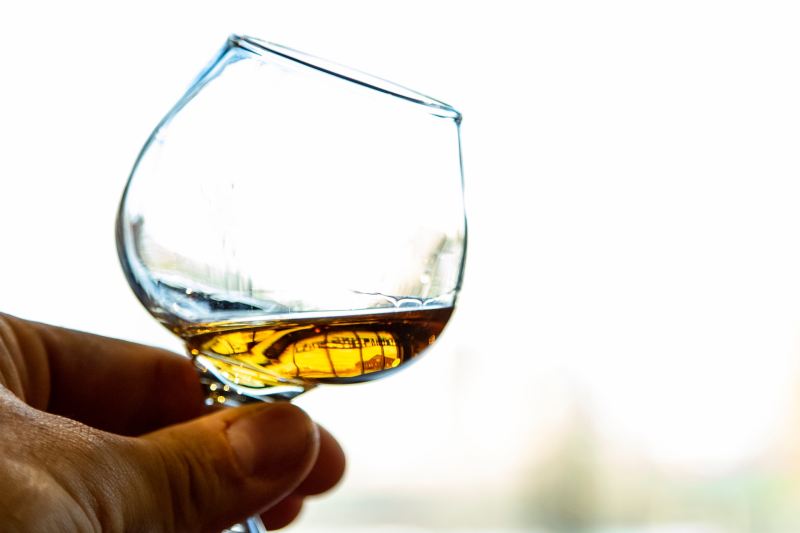When it comes to whiskey (and bourbon mainly), there are a lot of terms drinkers need to know to at least carry on a polite conversation about the spirit. Things like bottled-in-bond, mash bill, proof, angel’s share, age statement, bunghole, sour mash, high-rye, and non-chill-filtered come to mind immediately. Luckily, we’ve written articles delving into these and other whiskey-related terms (you can check it out right here). That said, there’s one term that we’d like to take a deeper dive into today: cask strength.
What is cask strength bourbon?

Also referred to as barrel proof or barrel strength, cask strength is a whiskey (and rum) term that’s actually quite self-explanatory. While it’s exactly as the name suggests, there’s so much more to it. Cask strength is used to describe a whiskey or rum that was taken directly from the cask or barrel and not diluted (or proofed down) with the addition of water.
If you didn’t know it already, your favorite whiskey doesn’t come out of the barrel at a smooth, easily sippable 80-proof. When it finished aging, it was a lot higher in alcohol content until the distillers added water to proof it down to a palatable 40% alcohol by volume. In reality, your favorite whiskey was likely closer to 55-65% alcohol when it was ready to be bottled.
Since cask strength whiskeys aren’t diluted with water, they are typically between 110 and 130 proof (and beyond in many cases).
Why make a cask strength bourbon?

You might wonder what the positives are when it comes to crafting a cask strength whiskey as opposed to one proofed down. There are many reasons why this style is so popular.
Many whiskey drinkers enjoy cask strength bourbon because it’s the spirit in its purest, most unadulterated form. You add it to a barrel, let it age, and then bottle it. No messing around with it. The aromas and flavors are exactly what the charred barrel created.
Also, if you crack open a bottle of cask strength bourbon, it means that the drinker can decide how much or how little to dilute the whiskey. Add a few splashes of water (or more) to open up even more aromas and flavors. Or drink it as is and enjoy everything the barrel brings to it.
Lastly, many drinkers enjoy cask strength bourbons because they can mix them into Old Fashioneds, Manhattans, and other whiskey-based cocktails without fear that they’ll get lost among all the different flavors. A big, bold, cask strength whiskey is more likely to stand up and remain at the forefront when it’s paired with bitters, herbs, fruit juices, simple syrup, and other ingredients.
Two of our favorite cask strength bourbons

Now that you have learned a little bit about the appeal of cask strength bourbons, it’s time to find some to add to your collection. Lucky for you, a handful of high-quality, complex cask strength bourbons are just waiting to be discovered. Below, you’ll find two of our favorites. Keep scrolling to see them all.
Wild Turkey Rare Breed

If you’re never tried Wild Turkey Rare Breed, you’re really missing out on an exceptional whiskey. This 116.8-proof whiskey is made with a mash bill of 75% corn, 13% rye, and 12% malted barley. It’s a blend of 6,8 and 12-year-old bourbons.
Tasting notes: The result is a complex, memorable whiskey with notes of pipe tobacco, sticky toffee, toasted vanilla beans, dried fruits, and peppery rye spice.
Elijah Craig Barrel Proof

Named for the man who purportedly invented bourbon (although this is widely disputed), Elijah Craig is a line of award-winning whiskeys. Our favorite is Elijah Craig Barrel Proof. This cask strength, small batch bourbon is matured between 10 and 11 years, depending on the batch.
Tasting notes: This popular whiskey is known for its complex, balanced flavor profile, which features hints of butterscotch, vanilla beans, peppery rye, cinnamon, candied orange peels, and oaky wood.
Bottom line

If you stick to 80-proof whiskey and you haven’t really ventured into the world of cask strength bourbon, you’re really doing yourself a disservice. There are myriad flavorful, noteworthy cask strength bourbons on the market. Visit your local liquor store, purchase a bottle, take it home, and pour yourself a neat glass. Take a sip, let it swirl on your tongue, and get immersed in the aromas and flavors. Then, add a splash or two of water and see how both the aromas and flavors open up and change. It’ll open your eyes to a whole new way to enjoy your favorite bourbon whiskey. You can thank us later.




